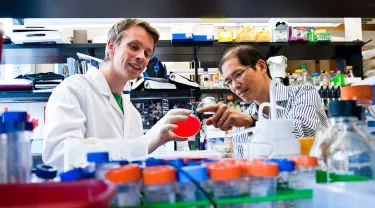Antimicrobial resistance (AMR) occurs when treatments such as antibiotics, antivirals, and antiparasitics become ineffective against the microorganisms they were created to fight. In these cases, those microorganisms become “superbugs” that can adapt to survive drug treatments and cause infections to persist and spread.
This phenomenon is ranked among the World Health Organization’s top 10 threats to global health.
“With AMR outpacing the development of new antimicrobial drugs, we risk returning to an era when life-threatening infectious diseases, such as tuberculosis, were a death sentence,” noted John Leong. Leong is the Edith Rieva and Hyman S. Trilling Professor and chair of Molecular Biology and Microbiology at Tufts University School of Medicine.
Leong serves on the senior leadership team at the Stuart B. Levy Center for Integrated Management of Antimicrobial Resistance (Levy CIMAR), a collaborative and crossdisciplinary initiative that was created to deliver new and innovative solutions to combat AMR.
Leong’s own research focuses on the interactions of specific pathogens, namely, E. coli, Streptococcus pneumoniae, and the Lyme disease spirochete. His goal? To understand the interaction between pathogens and host immune and epithelial cells in order to better understand how infections occur and to find treatments for these infections.
To effectively fight AMR, according to Leong, scientists must take a One Health approach to understanding disease transmission and the mechanisms by which we can stop it. One Health prioritizes the relationships among people, animals, and the environment—as well as the foods we all consume—as critical avenues by which drug-resistant microorganisms spread from one to another.
As Leong put it, “AMR is a complex problem requiring close monitoring and coordination with human and veterinary healthcare, sanitation, education, and government policymakers to prevent its spread. No single sector has the capacity to stop AMR alone.”
Pictured above: John Leong (right) with a student at the Graduate School of Biomedical Sciences
